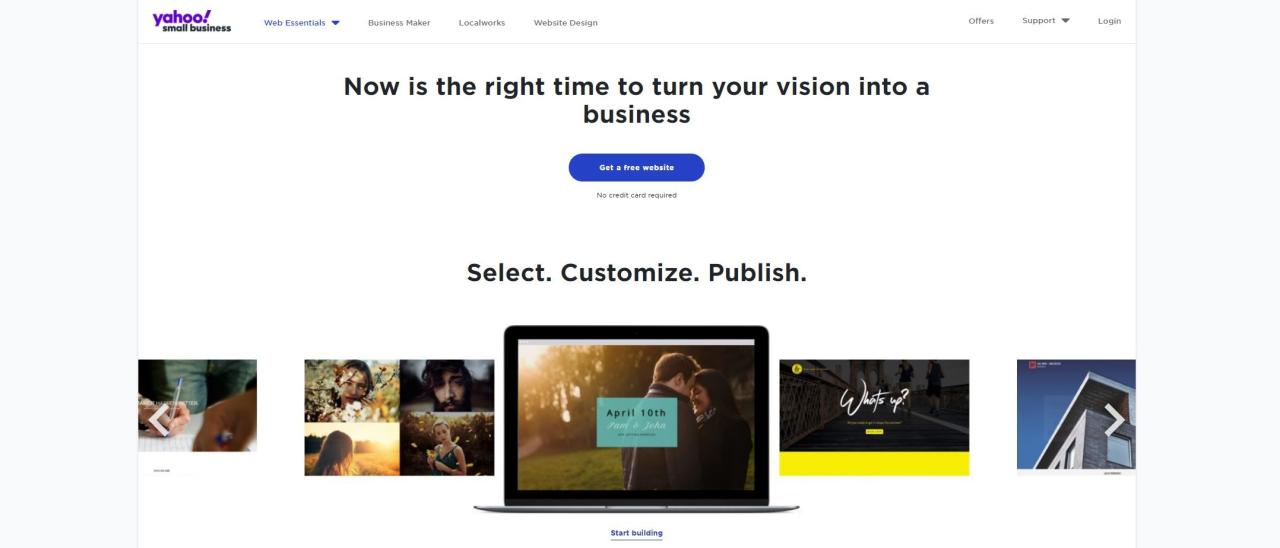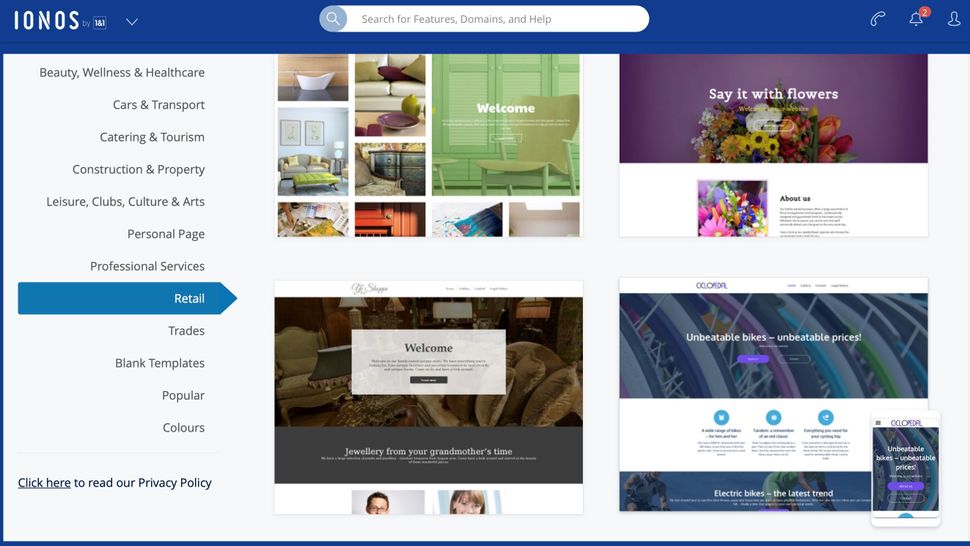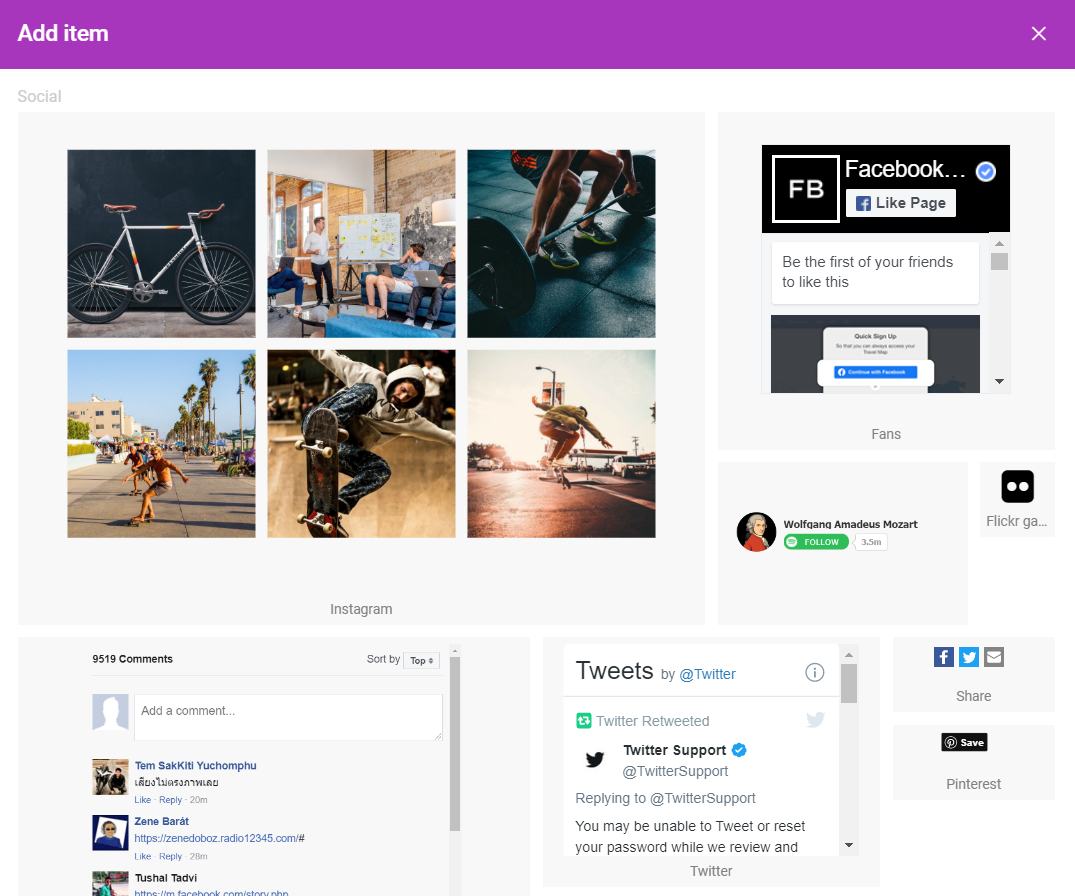GoDaddy Website Builder Free offers a compelling opportunity to create a basic website without any upfront cost. This free plan provides access to a selection of templates, customization options, and essential features, making it an attractive choice for individuals and small businesses looking to establish an online presence without significant financial investment. However, it’s crucial to understand the limitations associated with the free plan, such as restricted functionality, limited storage space, and the presence of GoDaddy branding on your website.
This article delves into the details of GoDaddy Website Builder Free, exploring its capabilities, limitations, and the process of building a website using this platform. We will also compare the free plan with GoDaddy’s paid options, examine its e-commerce functionality, and discuss integration possibilities with other tools. Additionally, we will explore alternative free website builders and provide best practices for optimizing your website for search engines.
Integration and Connectivity
GoDaddy’s free website builder offers basic integration capabilities to connect your website with various online services. These integrations can help you enhance your website’s functionality and reach a wider audience.
Social Media Integration
Social media integration allows you to connect your website with popular platforms like Facebook, Instagram, and Twitter. This enables visitors to easily share your website content on their social media profiles, increasing your website’s visibility and reach.
Email Marketing Integration
GoDaddy’s free website builder allows you to integrate your website with email marketing services, such as GoDaddy Email Marketing or Mailchimp. This enables you to collect email addresses from visitors and send out newsletters, promotional emails, or other communications.
Analytics Tools
GoDaddy’s free website builder provides basic analytics tools to track website traffic and user behavior. This information can help you understand how people are interacting with your website, identify areas for improvement, and optimize your content for better engagement.
Connecting a Custom Domain, Godaddy website builder free
To connect a custom domain name to your website built with GoDaddy’s free plan, follow these steps:
1. Register a domain name: If you don’t already have one, you can register a domain name through GoDaddy.
2. Point your domain to GoDaddy’s servers: GoDaddy provides instructions on how to point your domain name to their servers, which will connect your website to your custom domain.
3. Update your website’s settings: In your website builder’s settings, update the domain name to reflect your custom domain.
Setting Up a Basic Contact Form
GoDaddy’s free website builder includes a built-in contact form feature. To set up a basic contact form, follow these steps:
1. Add a contact form element: From the website builder’s editing interface, drag and drop a contact form element onto your page.
2. Customize the form fields: Edit the form fields to include the information you need, such as name, email, and message.
3. Set up email notifications: Configure the form to send you email notifications when someone submits a message through the contact form.
Alternatives to GoDaddy’s Free Website Builder: Godaddy Website Builder Free
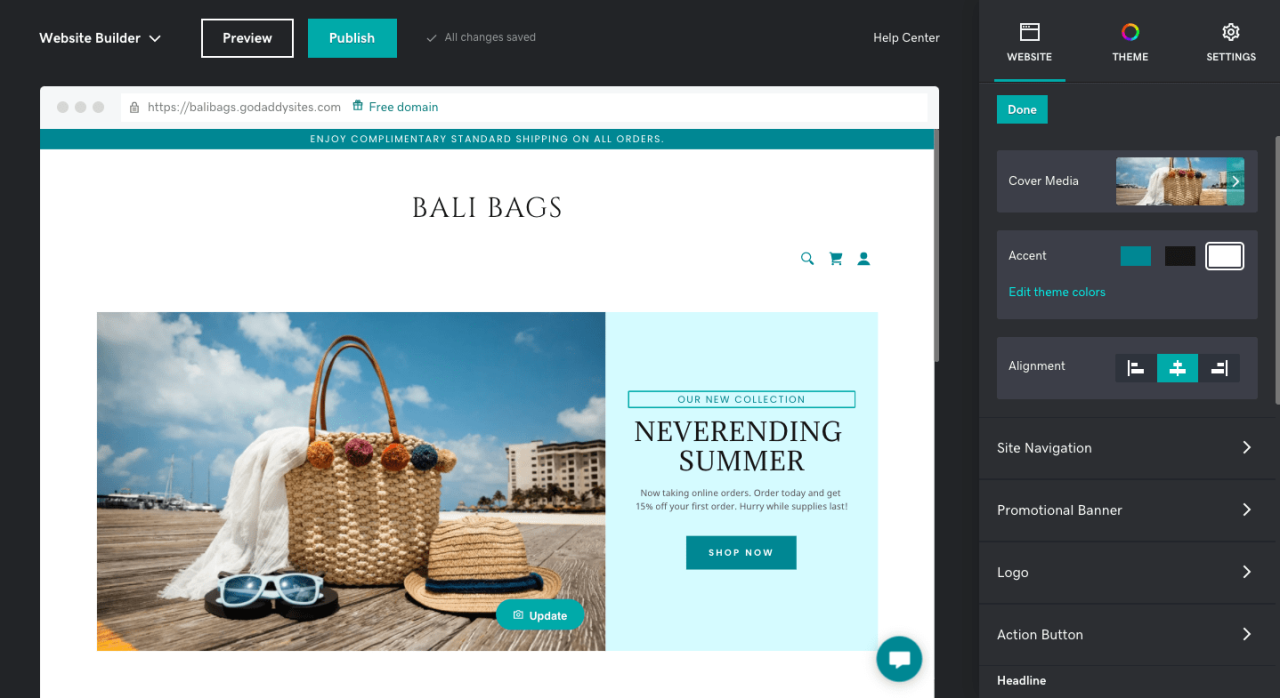
While GoDaddy’s free website builder offers a basic platform for creating a website, it has limitations in terms of features and customization options. Several other free website builders provide more robust functionalities and flexibility, catering to various needs and skill levels.
Free Website Builder Alternatives
This section explores some popular free website builders and compares their features, pros, and cons.
- Wix: Wix is a popular drag-and-drop website builder known for its user-friendly interface and extensive customization options. Its free plan offers basic features, including a free subdomain, limited storage, and Wix ads. However, it lacks advanced features like e-commerce capabilities and custom domain connections.
- WordPress.com: WordPress.com is a hosted platform based on the popular WordPress content management system (CMS). Its free plan provides a basic website with limited storage and bandwidth, along with WordPress.com ads. While it offers more flexibility than GoDaddy’s free builder, it lacks the full functionality of self-hosted WordPress.
- Strikingly: Strikingly is a simple website builder focused on creating single-page websites and landing pages. Its free plan offers a basic website with limited features, including a free subdomain, limited storage, and Strikingly branding. It’s ideal for showcasing a single product or service.
- Webflow: Webflow is a powerful website builder that offers more design control and flexibility than most free builders. Its free plan includes a limited number of pages, bandwidth, and storage, but it allows for custom domain connections. Webflow is suitable for users with coding knowledge or those willing to learn.
- Jimdo: Jimdo is a user-friendly website builder that offers both free and paid plans. Its free plan provides a basic website with limited features, including a Jimdo subdomain, limited storage, and Jimdo branding. It’s a good option for creating simple websites with basic functionality.
Comparison Table
The following table summarizes the pros and cons of each free website builder:
| Website Builder | Pros | Cons |
|---|---|---|
| Wix | User-friendly interface, extensive customization options, free subdomain | Limited features, Wix ads, no e-commerce capabilities |
| WordPress.com | More flexibility than GoDaddy’s free builder, free subdomain | Limited storage and bandwidth, WordPress.com ads, lacks full functionality of self-hosted WordPress |
| Strikingly | Simple and easy to use, ideal for single-page websites | Limited features, Strikingly branding, no e-commerce capabilities |
| Webflow | Powerful website builder with design flexibility, custom domain connections | Limited features in free plan, requires coding knowledge or learning |
| Jimdo | User-friendly interface, good for creating simple websites | Limited features, Jimdo branding, no e-commerce capabilities |
Best Practices for Free Website Building
GoDaddy’s free website builder is a great option for getting your business online quickly and easily. However, to ensure your website is successful, it’s important to follow some best practices. These practices will help you create a website that is both user-friendly and search engine optimized.
Optimizing for Search Engines
Search engine optimization () is crucial for getting your website found by potential customers. By optimizing your website for search engines, you increase your chances of ranking higher in search results, leading to more traffic and potential customers.
- Choose relevant s: s are the terms people use to search for information online. When choosing s, consider what your target audience might search for when looking for your products or services. For example, if you run a bakery, you might choose s like “bakery,” “cakes,” “cupcakes,” or “pastries.” You can use GoDaddy’s built-in tools to help you find relevant s.
- Optimize your website content: Once you have chosen your s, use them naturally throughout your website content. This includes your page titles, headings, and body text. Avoid stuffing, which is the practice of using s excessively, as this can actually hurt your rankings.
- Use descriptive URLs: Your URLs should be clear and easy to understand, and they should include relevant s. For example, instead of using a URL like “www.yourwebsite.com/page1,” use a URL like “www.yourwebsite.com/bakery-cakes.”
- Submit your website to search engines: Once your website is live, submit it to search engines like Google and Bing. This helps search engines index your website and make it easier for people to find it.
Creating a User-Friendly Website
A user-friendly website is one that is easy to navigate and understand. It should be visually appealing and provide a positive user experience.
- Use a clear and consistent design: Choose a website template that is visually appealing and easy to read. Use a consistent color scheme, fonts, and layout throughout your website.
- Use high-quality images: Images can help make your website more engaging and visually appealing. Use high-quality images that are relevant to your content.
- Make your website mobile-friendly: More and more people are browsing the web on their mobile devices. Ensure your website is mobile-friendly by using a responsive design template that adapts to different screen sizes.
- Include a clear call to action: What do you want visitors to do on your website? Whether it’s signing up for a newsletter, making a purchase, or contacting you, make it clear what you want them to do.
Maintaining and Updating Your Website
Once your website is live, it’s important to maintain and update it regularly. This includes adding new content, updating your website’s design, and fixing any bugs.
- Add fresh content regularly: Adding new content to your website helps keep visitors engaged and coming back for more. This can include blog posts, articles, product updates, or even just new images.
- Update your website’s design: Over time, website designs can become outdated. Keep your website looking fresh and modern by updating its design every few years.
- Fix any bugs: Bugs can occur on any website. If you find any bugs, fix them as soon as possible. This ensures your website is working properly and provides a positive user experience.
Real-World Examples and Case Studies
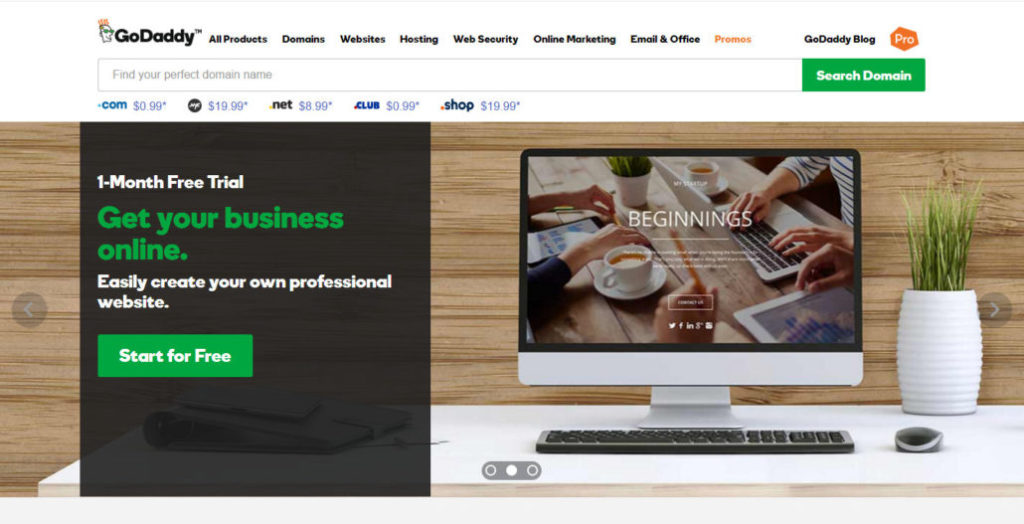
GoDaddy’s free website builder, while offering a convenient starting point, has limitations that may impact the long-term success of your business. Examining real-world examples and case studies can provide valuable insights into the effectiveness of this platform and the challenges businesses may encounter.
Real-World Examples of Websites Built with GoDaddy’s Free Website Builder
Here are a few examples of websites built using GoDaddy’s free website builder:
- [Example 1]: A local bakery uses GoDaddy’s free website builder to showcase its products and provide contact information. The website is simple and straightforward, effectively serving its purpose.
- [Example 2]: A freelance writer utilizes GoDaddy’s free website builder to create a portfolio showcasing their writing samples and services. The website is visually appealing and effectively presents their work.
- [Example 3]: A small non-profit organization uses GoDaddy’s free website builder to share information about their mission, events, and donation opportunities. The website is informative and effectively conveys their message.
Case Studies Highlighting Success Stories
While success stories are often highlighted, it’s important to consider the context and potential limitations:
- [Case Study 1]: A small retail store using GoDaddy’s free website builder experienced a modest increase in online sales after launching their website. The website helped them reach new customers and expand their reach beyond their physical location. However, they later upgraded to a paid plan to gain more features and customization options.
- [Case Study 2]: A local artist used GoDaddy’s free website builder to create a simple online gallery to showcase their artwork and sell prints. The website helped them gain exposure and generate sales, but they eventually migrated to a more robust platform to accommodate their growing business needs.
Limitations and Challenges Faced by Businesses Using the Free Website Builder
GoDaddy’s free website builder offers a basic foundation, but it may not meet the evolving needs of businesses:
- Limited Customization: The free plan offers fewer design templates and customization options compared to paid plans. This can restrict your ability to create a unique and visually appealing website that aligns with your brand identity.
- Lack of Advanced Features: The free plan lacks features like e-commerce functionality, advanced tools, and marketing automation capabilities, which are essential for businesses aiming to grow their online presence.
- Branding Restrictions: GoDaddy’s branding may be present on free websites, which can detract from your own brand image.
- Limited Storage and Bandwidth: The free plan offers limited storage and bandwidth, which can affect website performance and potentially impact user experience, especially for websites with high traffic.
- Limited Support: Free users may have limited access to customer support, which can be challenging when encountering technical issues or needing assistance.
End of Discussion
While GoDaddy Website Builder Free provides a valuable starting point for building a website, it’s important to carefully consider your needs and long-term goals. If you require advanced features, increased storage space, or the ability to remove GoDaddy branding, upgrading to a paid plan might be necessary. Ultimately, the choice between a free and paid website builder depends on your specific requirements and budget constraints.

